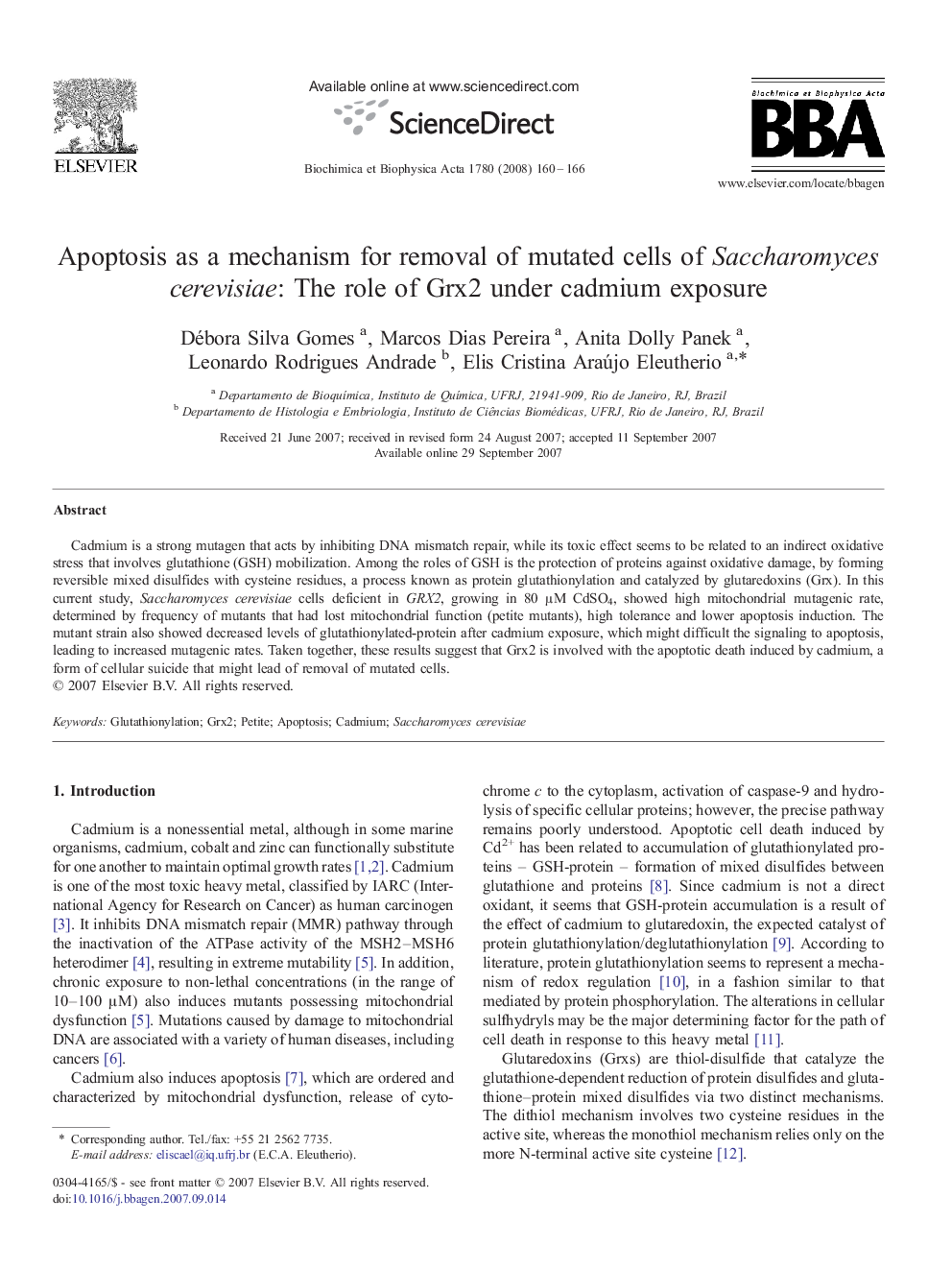| Article ID | Journal | Published Year | Pages | File Type |
|---|---|---|---|---|
| 10800952 | Biochimica et Biophysica Acta (BBA) - General Subjects | 2008 | 7 Pages |
Abstract
Cadmium is a strong mutagen that acts by inhibiting DNA mismatch repair, while its toxic effect seems to be related to an indirect oxidative stress that involves glutathione (GSH) mobilization. Among the roles of GSH is the protection of proteins against oxidative damage, by forming reversible mixed disulfides with cysteine residues, a process known as protein glutathionylation and catalyzed by glutaredoxins (Grx). In this current study, Saccharomyces cerevisiae cells deficient in GRX2, growing in 80 μM CdSO4, showed high mitochondrial mutagenic rate, determined by frequency of mutants that had lost mitochondrial function (petite mutants), high tolerance and lower apoptosis induction. The mutant strain also showed decreased levels of glutathionylated-protein after cadmium exposure, which might difficult the signaling to apoptosis, leading to increased mutagenic rates. Taken together, these results suggest that Grx2 is involved with the apoptotic death induced by cadmium, a form of cellular suicide that might lead of removal of mutated cells.
Related Topics
Life Sciences
Biochemistry, Genetics and Molecular Biology
Biochemistry
Authors
Débora Silva Gomes, Marcos Dias Pereira, Anita Dolly Panek, Leonardo Rodrigues Andrade, Elis Cristina Araújo Eleutherio,
